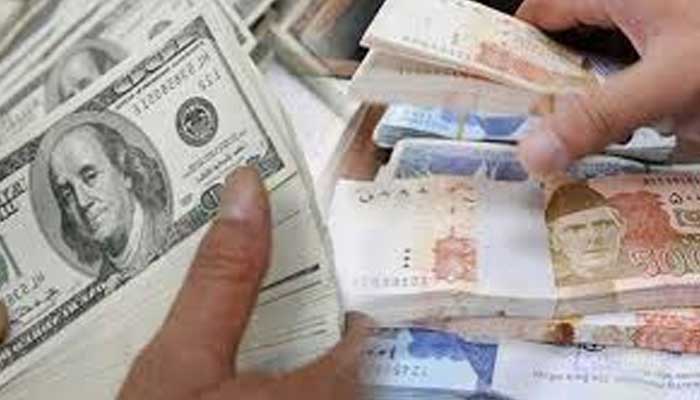Dollar inflows from traditional lenders decline
The PTI led government has so far obtained only $2.94 billion from all multilateral, bilateral creditors and commercial lenders in shape of loans and grants during the first eight months (July-Feb) period of the current fiscal year 2018-19 against $7.608 billion in the same period of the last fiscal under the PML-N led regime.
ISLAMABAD: The much- needed dollar inflows from traditional lenders have significantly declined during the current financial year owing to lack of implementation capacity and inability of Islamabad to get Letter of Comfort (LOC) from the IMF for obtaining lump sum budgetary/programme loans from the World Bank and Asian Development Bank.
The PTI led government has so far obtained only $2.94 billion from all multilateral, bilateral creditors and commercial lenders in shape of loans and grants during the first eight months (July-Feb) period of the current fiscal year 2018-19 against $7.608 billion in the same period of the last fiscal under the PML-N led regime.
On positive side, China continued to assume the position of largest bilateral donor for Pakistan as Beijing provided $1.209 billion in first eight months of the current fiscal against $1.129 billion in the same period of the last financial year.
The top guns at Ministry of Finance argued that the dollar inflows were standing at $7.608 billion in July-Feb period of last fiscal year 2017-18 with injection of $2.5 billion in shape of international bonds and $1.777 billion obtained through commercial borrowings.
So far in the ongoing fiscal year 2018-19, Islamabad did not generate any penny through issuance of international bonds while the government raised only $499.44 million in shape of commercial borrowings so reliance on this avenue got reduced by the incumbent regime.
Independent economists as well as official sources conceded in their background discussions that it was flawed argument of official circles that they did not launch any international bonds mainly because then the question arose who could be held responsible for failure of the government for not entering into international market for raising the required funding. The government could not launch any international bond because Pakistan was not under the IMF programme and there was no story on the economic front that could be narrated to apprise international investors and second reason was reduced appetite in international market for raising funding for emerging markets.
Advisor and Spokesperson for Ministry of Finance Dr Khaqan Najeeb, however, said that adequate financing is in place for current fiscal year and beyond. The government continues to follow a multipronged strategy to ensure continued stability in the country’s balance of payment (BOP) position. The strategy has included attracting more foreign direct investment, sale of assets and bilateral and multilateral flows.
The government has also launched Pakistan Banao certificate, a first ever retail offering to Pakistanis abroad. The government is also working on diversifying its investor base through issuance of a Panda bond. In addition to arranging adequate commercial and medium term financing, bringing down the current account deficit is a key component of the strategy of BOP management, he said.
The official data on foreign inflows for July-Feb period of 2018-19 showed that the disbursement from Asian Development Bank declined by $170.43 billion as it stood at $376.11 million in first eight months of the current fiscal year 2018-19 against $546.54 million in the same period of the last financial year 2017-18.
The project financing from World Bank (WB) in shape of IBRD and IDA also reduced as it stood at $18 million and $142.83 million respectively during the first eight months of the current fiscal year against $98.69 million and $220.58 million in the same period of the last financial year. The IBRD funding from the WB slashed down by over $70 million while IDA funding also reduced by $77.75 million in the ongoing fiscal year.
Total dollar inflows received from multilateral lenders, including ADB, AIIB, WB, IDB, IFAD, MTDF UNHCR and others fetched $976.42 million during the current fiscal year so far against budgetary estimates of $3.384 billion for whole financial year. It means that after passing eight month less than one third inflows could be materialised and now the government would have to gear up its efforts in the remaining period of the current fiscal year for achieving the desired results.
Islamabad, so far, received $1.485 billion in shape of bilateral assistance largely from China alone against budgetary estimates of $1.306 billion for whole financial year.
Top official of Economic Affairs Division (EAD) said that the disbursement inflows were expected to pick up in the remaining months of the current fiscal year and the desired target of $5.6 billion would be materialised at all costs.
When contacted former finance minister and renowned economist, Dr Hafeez A Pasha, on Friday, he said that the implementation capacity got eroded due to which project inflows from traditional avenues dried down which should be considered as sign of worrisome for the economic managers. He said that the assistance obtained from friendly countries was not additional but meant for providing breathing space in the absence of the IMF programme on immediate basis.
-
 ASAP Rocky Recalls 'embarrassing' First Meeting With Rihanna
ASAP Rocky Recalls 'embarrassing' First Meeting With Rihanna -
 Archie, Lilibet’s Chances At Meeting King Charles Get Promising Update: Here’s Why
Archie, Lilibet’s Chances At Meeting King Charles Get Promising Update: Here’s Why -
 Claire Foy Shares Rare Views On Typecasting Amid New Gig
Claire Foy Shares Rare Views On Typecasting Amid New Gig -
 Britney Spears Raves About Madonna In New Social Media Post
Britney Spears Raves About Madonna In New Social Media Post -
 Hailey Bieber Shares Sweet Snap Of Husband And Baby
Hailey Bieber Shares Sweet Snap Of Husband And Baby -
 Therapist Killed In Office As Former Client Launches Knife Attack
Therapist Killed In Office As Former Client Launches Knife Attack -
 Gaten Matarazzo Brands 'Stranger Things' Final Scene 'nerve-racking'
Gaten Matarazzo Brands 'Stranger Things' Final Scene 'nerve-racking' -
 David Beckham Speaks Out After Son Brooklyn Beckham's Shocking Post
David Beckham Speaks Out After Son Brooklyn Beckham's Shocking Post -
 Sophie Turner Gets Candid About 'imposter Sydrome' Post 'GOT'
Sophie Turner Gets Candid About 'imposter Sydrome' Post 'GOT' -
 When Nicola Peltz's Boyfriend Anwar Hadid Found Solace In Dua Lipa's Arms
When Nicola Peltz's Boyfriend Anwar Hadid Found Solace In Dua Lipa's Arms -
 Claire Foy Reveals Rare Impact Of 'The Crown' Gig On Career
Claire Foy Reveals Rare Impact Of 'The Crown' Gig On Career -
 Megan Thee Stallion Teases New Music On The Way
Megan Thee Stallion Teases New Music On The Way -
 Blonde Kate Stuns In Photos With Prince William During Rare Joint Engagement
Blonde Kate Stuns In Photos With Prince William During Rare Joint Engagement -
 Kate Gosselin Reveals Harrowing Moment Thief Nearly Took Her Down
Kate Gosselin Reveals Harrowing Moment Thief Nearly Took Her Down -
 Billy Bob Thornton Weighs In On Contrast To 'Landman' Role
Billy Bob Thornton Weighs In On Contrast To 'Landman' Role -
 Amanda Holden May Swap Position To Different Reality Show: See Which
Amanda Holden May Swap Position To Different Reality Show: See Which




